Understanding and improving employee engagement is key to long-term success in today’s competitive business environment.
An employee engagement survey is one of the best ways to gauge how your team members feel. When properly conducted, these surveys offer a clear window into your workplace culture, employee satisfaction, and the areas most needing improvement.
This guide will cover the importance of these surveys, tips for designing them, and best practices for using survey insights to create an impactful action plan.
Simplify HR workflows with visual tools
Create clear, engaging training and documentation that helps your teams better understand company policies and processes.
Learn More
What is an employee engagement survey?
An employee engagement survey is a structured tool to collect employee feedback about their engagement, job satisfaction, and overall sentiment toward their workplace.
The purpose is to assess employee sentiment and understand how connected employees feel to the company, identify pain points, and gain actionable insights to drive positive change.
Key benefits of employee engagement surveys
Employee engagement surveys are a powerful tool for enhancing workplace culture, building trust, and providing insights to guide organizational improvements. Here’s a more detailed look at the main benefits of implementing these surveys.
Enhanced workplace culture
ThriveSparrow explains, “Engagement surveys provide insights into employees’ perceptions of workplace culture, allowing organizations to tailor initiatives that support inclusivity and respect. This approach helps companies proactively address cultural concerns, promoting a positive and supportive atmosphere.”
By regularly engaging employees, organizations demonstrate that they value employees’ perspectives, creating a culture of inclusion. When employees are asked for input, they’re more likely to feel like valued team members, making them more motivated and engaged in their work.
Increased response rate and trust
Conducting regular surveys shows a commitment to continuous improvement and openness, which helps foster trust.
Employees are more likely to participate if management consistently values their input and acts on their feedback. Surveys also establish a foundation of transparency, which is critical for building a reliable communication loop between employees and management.
According to an article by Harvard Business Review, “Employees in high-trust organizations are more productive, have more energy at work, collaborate better with their colleagues, and stay with their employers longer than people working at low-trust companies.”
Regular engagement surveys enhance employees’ confidence in the organization’s intentions, encouraging honest feedback and increasing survey participation rates over time.
Actionable insights
Employee engagement surveys reveal valuable insights that help managers pinpoint areas that need improvement.
For example, if survey results indicate concerns about work-life balance, organizations can respond by reevaluating policies or implementing flexible work arrangements. Such targeted action plans, informed by direct employee feedback, contribute to ongoing improvements that align with employees’ needs.
A study by Forbes highlights that “95% of employees who perceive their leaders as adept at implementing effective actions based on survey insights report significantly higher engagement levels.” These insights empower managers to implement changes that make a real impact on employees’ daily work experiences, ultimately contributing to long-term satisfaction and performance improvements.
2024 Workplace Flexibility Trends Report
New data reveals workers do not feel supported amidst changing work environments.
Get the Full Report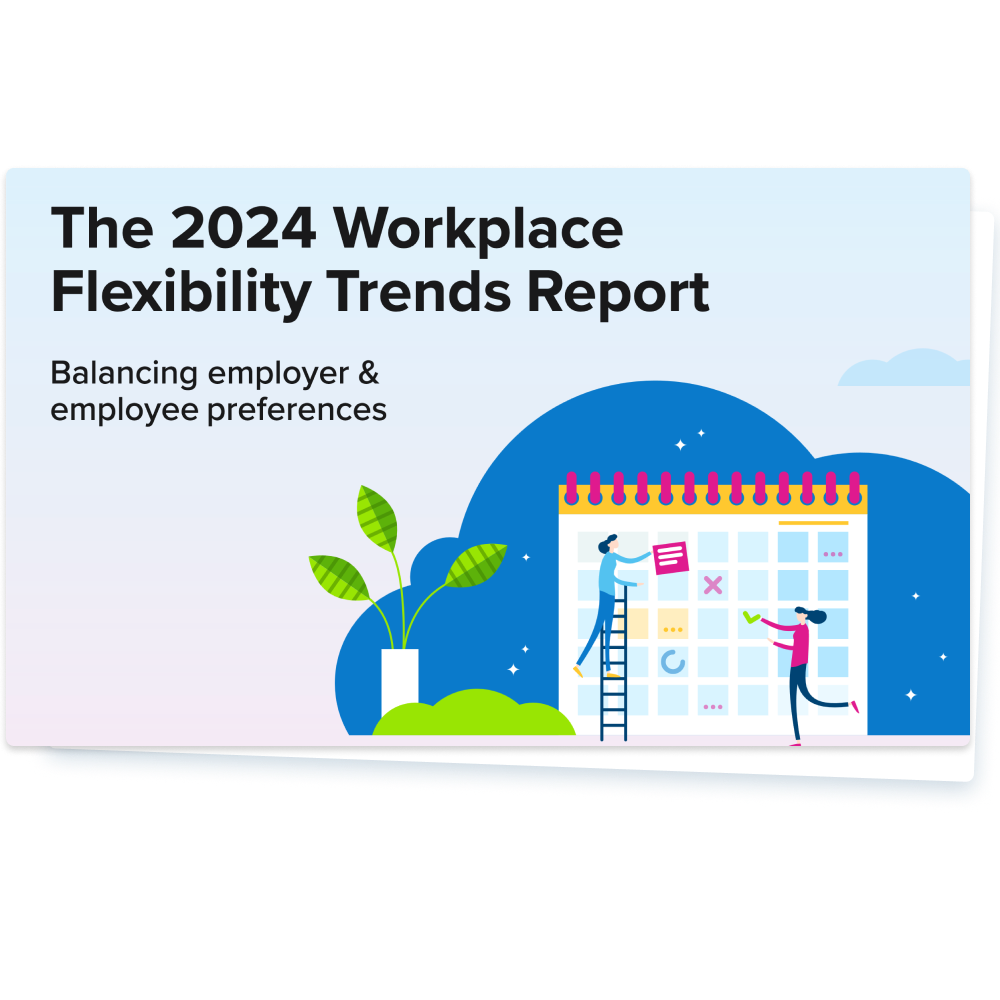
Why employee engagement surveys are important
Understanding employee engagement is essential for maintaining high morale and productivity. Engaged employees are more likely to work toward company goals, leading to a motivated workforce that performs better and stays longer.
Improved employee performance
High engagement levels are strongly linked to better job performance and productivity. Engaged employees are more likely to take initiative, collaborate with their peers, and align with organizational goals, collectively driving efficiency and innovation in the workplace.
Insights into work-life balance
Surveys provide information on how employees perceive their balance, helping to shape policies around flexibility and remote work.
When employees feel supported in balancing personal and professional life, it can reduce burnout and improve overall job satisfaction. This feedback also helps employers understand changing needs, allowing them to implement adjustments that enhance retention and employee well-being, such as flexible hours, hybrid work options, or wellness programs.

Measuring employee engagement:
Regular surveys identify trends in engagement over time and support a consistent approach to workplace improvements.
By tracking engagement metrics, organizations can assess the effectiveness of their initiatives and quickly spot areas needing immediate attention.
This data-driven approach also enables companies to compare engagement levels across departments, helping to address unique team needs and create a more cohesive work environment.
Types of employee engagement surveys
Employee engagement surveys come in various forms, each tailored to uncover different insights into how employees feel about their work environment, leadership, and overall job satisfaction. Choosing the right type of survey helps organizations gather actionable data, whether they are looking for quick updates on morale or a deep dive into factors affecting retention and productivity.
Pulse surveys
These are brief, frequent surveys that capture current employee sentiment on key issues. By gathering real-time data, pulse surveys offer insight into engagement levels and allow managers to adjust strategies as needed.
Annual satisfaction surveys
Conducted yearly, these surveys delve into broader workplace aspects, including company culture, career development, and job satisfaction. With deeper insights, these surveys guide longer-term engagement strategies.
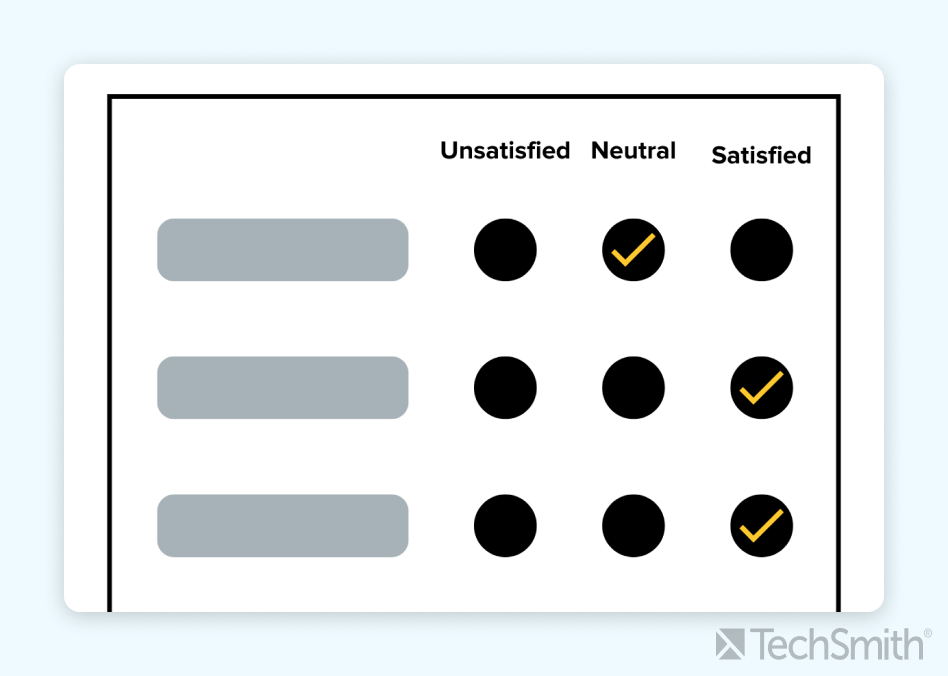
Onboarding and exit surveys
New hires and exiting employees provide unique perspectives on the company. Onboarding surveys reveal areas for smoother integration, while exit surveys help identify reasons behind turnover.
How to design an effective employee engagement survey
Creating a well-structured employee engagement survey is essential for gathering actionable feedback that can lead to meaningful improvements in the workplace.
When thoughtfully designed, these surveys provide insights into how employees feel and foster a sense of trust and openness. Here’s a step-by-step guide to creating an effective engagement survey that yields valuable information and encourages high response rates.
Step 1: Define the purpose of the survey
To create a survey that gathers relevant feedback, first clarify the survey’s purpose.
Are you looking to measure overall job satisfaction, gain insights into work-life balance, or understand how well employees feel aligned with the company’s goals? Defining a clear objective will help you decide on the types of questions to include and ensure that the survey remains focused.
For example, ask about career development and training access to assess professional growth opportunities.
Meanwhile, questions about communication, respect, and values would be more appropriate if your focus is on company culture. Pinpointing your purpose will keep the survey concise and relevant, increasing the chances that employees will provide honest and detailed responses.
Consider involving management and HR leaders in setting objectives, as they can offer insights into specific areas needing attention. Review previous survey results (if available) to identify recurring themes or trends that could guide your questions this time around.
Step 2: Include a mix of question types
To gain a well-rounded understanding of employee engagement, it’s beneficial to use various question types.
Start with multiple-choice questions to gather structured, quantitative data, allowing you to analyze responses quickly and compare them over time.
Rating scale questions (e.g., a 1-5 scale) are effective for measuring opinions on various topics, such as work-life balance, job satisfaction, or support from management.
Lastly, open-ended questions allow employees to elaborate on their thoughts and experiences, giving you more in-depth, qualitative feedback. By mixing these types, you create a survey that is both comprehensive and engaging.
Step 3: Ask clear and relevant questions
Clarity is key in survey design. Ambiguously worded questions can lead to misunderstandings, resulting in difficult interpretation of data. Keep each question straightforward and directly relevant to the engagement topics you want to measure to avoid misunderstandings.
For example, instead of asking a broad question like “How do you feel about your job?” try something more specific, like “Do you feel your career goals are supported by management?” This phrasing clarifies that the focus is on career development support from leadership.
It’s also helpful to avoid jargon or complex language that might confuse participants. Employees are more likely to respond thoughtfully to questions they understand right away, which ultimately provides you with clearer, more accurate insights. You might even consider conducting a test run with a small group to ensure that questions are understood as intended.
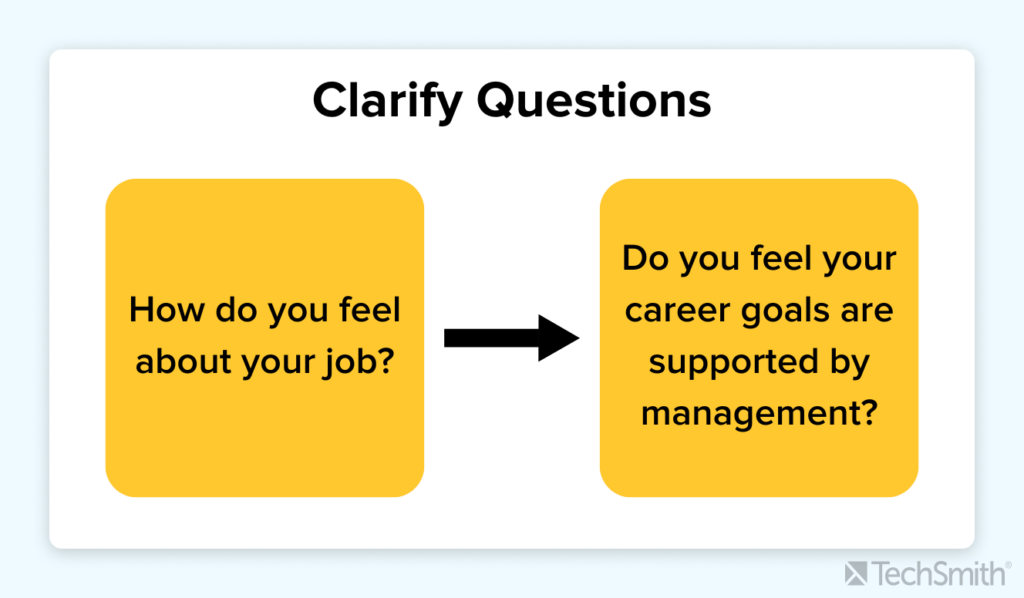
Step 4: Keep it anonymous
Anonymity is one of the most critical aspects of any employee engagement survey. When employees know their feedback is anonymous, they’re more likely to provide honest responses without fearing retribution.
This is particularly important for questions related to sensitive topics, such as management practices or workplace culture. If employees feel their identities could be tied to their responses, they may avoid addressing certain issues or may sugarcoat their answers, leading to skewed data.
To reassure participants of their privacy, communicate the survey’s anonymity policy clearly in both the introduction and closing sections of the survey. Emphasize that the information collected will be analyzed in aggregate, with no identifying details attached.
Consider including a confidentiality statement at the beginning of the survey, reiterating that honest feedback will help improve the workplace for everyone.
Step 5: Use Tools for Clarity and Efficiency
Implementing the right tools can streamline the survey design process and improve employees’ experience. Tools like Snagit are great for capturing important points in the survey or creating visual guides that help employees understand how to complete the survey correctly.
Visual cues, like step-by-step instructions or annotated screenshots, can clarify complex questions, making it easier for employees to participate without confusion. Camtasia is another powerful tool that can enhance clarity and engagement by allowing you to create video tutorials explaining the survey’s purpose and importance.
For example, you might record a brief video introduction from HR or company leadership, encouraging employees to participate and explaining how their feedback will help drive positive change.
This human touch can increase trust and motivate more employees to complete the survey thoughtfully. Tools like these make it easier for employees to understand and engage with the survey, ultimately leading to more accurate and actionable responses.
Annotate and edit screenshots with Snagit
Professional mark-up tools and powerful features make it easy to create helpful images.
Try it Free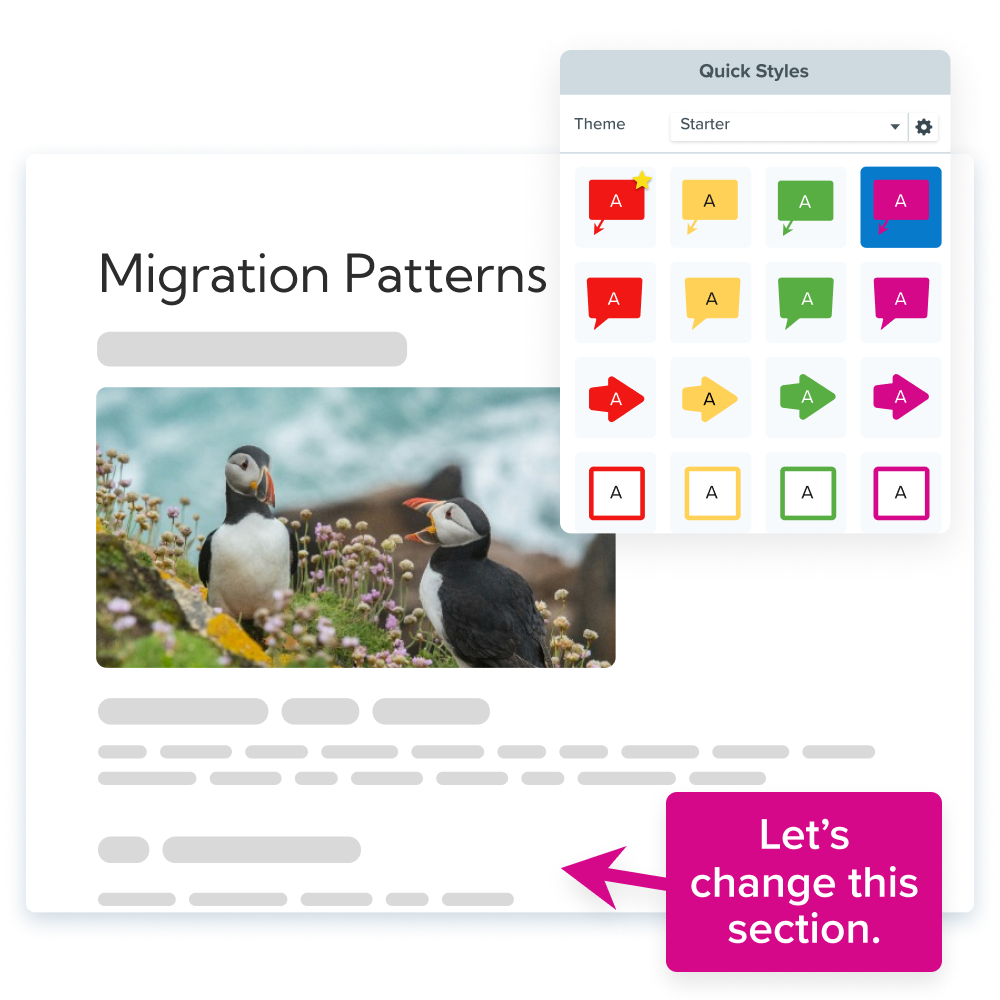
Key questions to ask in an employee engagement survey
The right questions in your employee engagement survey can help you uncover what’s working well and where improvements are needed. Here’s a breakdown of some essential questions to include in your survey.
Questions to measure levels of engagement
Gauge how invested your employees are in their work with questions like:
- “Do you feel motivated to go above and beyond in your work?”
- “How aligned do you feel with the company’s long-term goals?”
These questions can help reveal whether employees feel driven and if they understand the company’s mission, which can be key indicators of long-term retention.
Questions on career development and professional growth
Employees want to grow within their roles. To understand if your organization is supporting this, ask:
- “Do you feel supported in achieving your career goals?
- “Do you believe there are ample opportunities for growth within the company?”
These questions can highlight if there’s a need for more training programs or clear career pathways.
Questions about work-life balance and well-being
A healthy work-life balance is essential for employee satisfaction and productivity. Consider asking:
- “How would you rate your work-life balance?”
- “Do you feel the company supports your personal and professional life equally?”
These responses can guide improvements in company policies or highlight the need for better resources to prevent burnout.
Questions to assess workplace culture and team dynamics
The way employees interact with their team can significantly impact job satisfaction. Include questions like:
- “Do you feel comfortable sharing your opinions with your team?”
- “How would you describe the team’s atmosphere for collaboration?”
You can foster a more inclusive and collaborative environment by identifying communication gaps or teamwork challenges.
Open-ended questions for deeper insights
To dive deeper into employee’s thoughts and ideas, incorporate some open-ended questions. For instance:
- “What changes would improve your work environment?”
- “How can the company better support your career and personal development?”
These questions can generate actionable suggestions that might not have been considered otherwise.
How to distribute employee engagement surveys
If your team members find it difficult or inconvenient to participate in your survey, you may not get the responses you’re hoping for. Follow these best practices to ensure a smooth survey distribution process.
Choose the right platform
Selecting the right tool can make all the difference in gathering useful data. Use a user-friendly survey tool like Google Forms, SurveyMonkey, or Culture Amp, allowing easy use and efficient data collection.
Communicate the purpose
Clearly explain why the survey is important. Use a screen recorder like Camtasia or Snagit to create a brief video announcement detailing the survey’s purpose and how it will benefit employees. This can motivate team members to participate.
Ensure accessibility on mobile devices
Make the survey mobile-friendly to enable completion on the go, which can lead to a higher response rate.
Keep it short and focused
Aim for a survey length of 10-15 minutes, especially for pulse surveys, to avoid survey fatigue and increase completion rates.
Analyzing employee engagement survey results
Once you’ve collected responses from your employee engagement survey, the next step is to analyze the data effectively. A thoughtful analysis can uncover key insights and lead to actionable improvements.
Review quantitative data
Analyze numerical data like satisfaction scores, ratings, and overall engagement. Tools like Snagit can capture and annotate data for efficient sharing.
Gather insights from open-ended responses
Look for patterns in open-ended responses, especially around issues like communication and career support, which are often highlighted in employee feedback.
Compare results over time
Tracking survey results over time reveals patterns, showing which areas are improving and which need further focus.
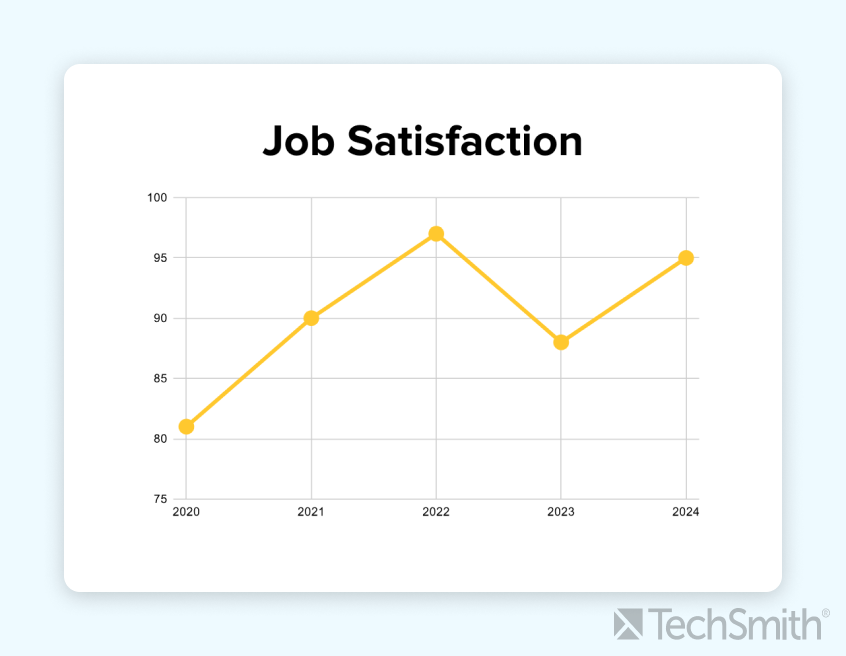
Create a report
Summarize your findings into a clear, concise report to share with stakeholders. Consider creating a video presentation of the results, which can be more engaging for team members.
Developing an action plan based on survey results
An effective action plan can turn survey results into a roadmap for positive change.
Identify key areas for improvement
Prioritize the main issues raised by employees, like work-life balance or professional growth.
Set clear, measurable goals
Establish SMART goals to address the issues identified. For example, “Increase work-life balance satisfaction by 10% within six months by implementing flexible work hours.”
Assign roles and responsibilities
Determine which departments or team members are best suited to handle specific action items, such as HR for growth programs or team leads for workload management.
Implement changes
Roll out initiatives based on employee feedback, such as flexible work options, training programs, or more frequent team-building activities.
Communicate progress
Keep employees updated on changes being made. Recording a monthly video update using Camtasia or writing an email newsletter can keep everyone informed and engaged.
Faster video creation with Rev
Make videos as easy as click, click, done! Camtasia Rev is so fast it’s like magic!
Free Download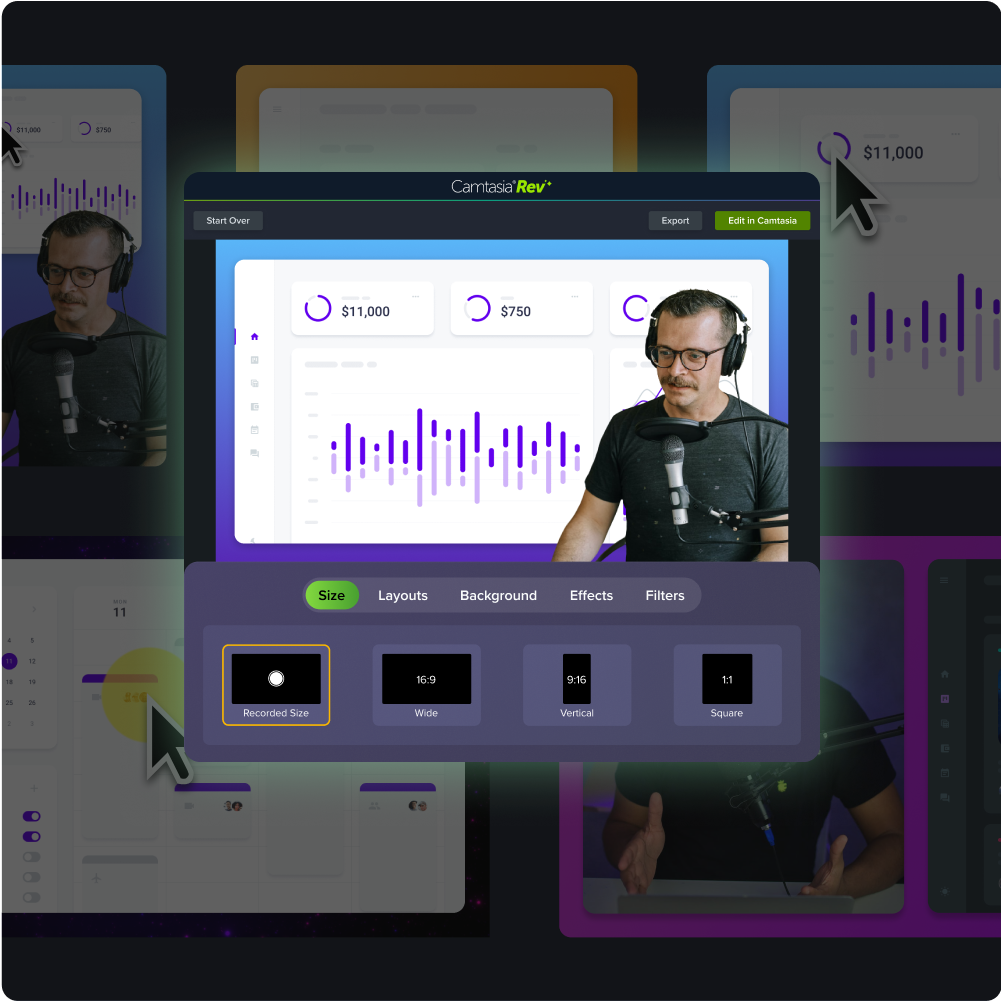
Using employee engagement surveys for long-term success
Employee engagement surveys are not merely a snapshot in time; they are essential for cultivating a culture of continuous improvement and responsiveness within an organization.
When used effectively, these surveys become invaluable tools for creating a thriving workplace, driving employee satisfaction, and enhancing productivity over the long term.
A commitment to regularly assessing employee sentiment demonstrates that their feedback is valued and used to effect positive change.
Reassess and adjust regularly
Employee needs, motivations, and experiences evolve over time, as do the workplace dynamics. Frequent reassessment through engagement surveys lets you capture these changes and respond proactively.
Rather than waiting until issues escalate, regular surveys can help uncover problems early, making it easier to implement meaningful adjustments before morale or productivity suffers.
Consider quarterly or biannual pulse surveys, which are shorter and more focused than annual surveys. These allow for quick temperature checks on employee engagement, job satisfaction, and specific issues like workload or work-life balance.
Feedback from regular surveys provides critical insights into emerging trends within the organization. Additionally, these surveys empower employees by reinforcing that their voices are heard consistently.
Adjusting policies, communication styles, or team dynamics in response to feedback promotes a more agile and adaptable workplace culture. Culture Amp suggests, “Don’t shy away if your employees are bringing up uncomfortable topics such as job security or the company’s growth and financials. Transparency builds employee trust and mitigates unfounded concerns.”
Measure progress over time
Tracking engagement over time is key to gauging the effectiveness of initiatives, as well as determining where further improvements are needed.
By measuring year-over-year data and comparing current results with past performance, you can identify patterns and assess the long-term impact of your engagement strategies.
Establishing benchmarks based on previous survey results allows you to set measurable goals, such as increasing satisfaction with career development opportunities or improving perceptions of management transparency.
Each survey provides a baseline for evaluating whether implemented changes resonate with employees. For example, if one survey highlights a lack of growth opportunities, HR might respond by introducing professional development programs or mentorship opportunities. Future surveys can track how employees’ perceptions of growth change in response to these new initiatives.
Build a better workplace with employee engagement surveys
Employee engagement surveys are essential for building a stronger, more positive work environment. They provide leaders with candid feedback, offering insight into employee satisfaction and the specific factors driving engagement or disengagement. This data allows companies to create actionable strategies tailored to real employee needs, fostering a sense of trust and openness.
Tools like Camtasia and Snagit make the process even smoother, facilitating clear communication from the survey rollout to the reporting stage. By continuously acting on survey insights, companies can maintain a cycle of improvement that enhances morale, productivity, and retention.
Make great training videos
Camtasia Editor is the best way to make training and instructional videos that keep your viewers engaged.
Learn More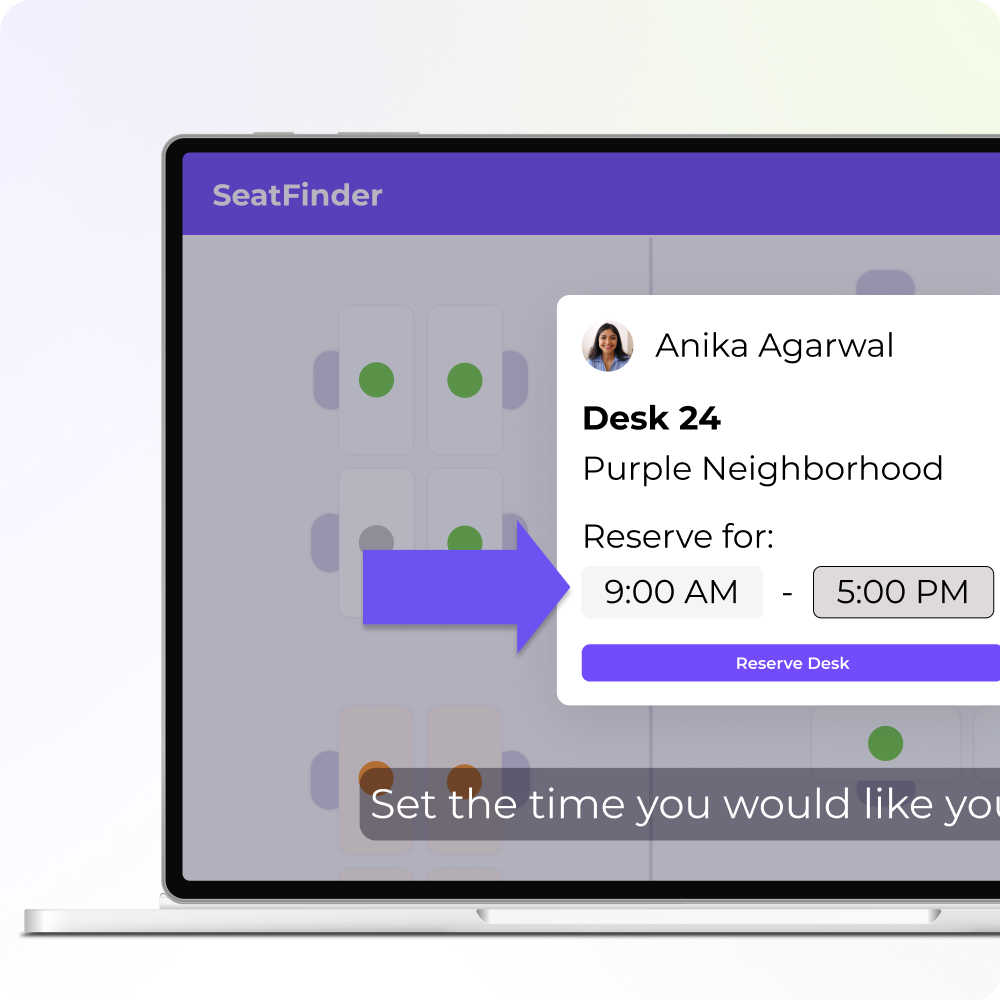



Share